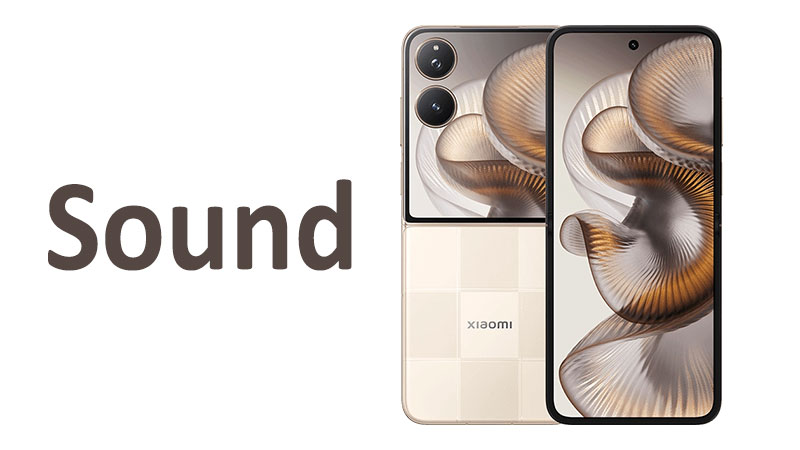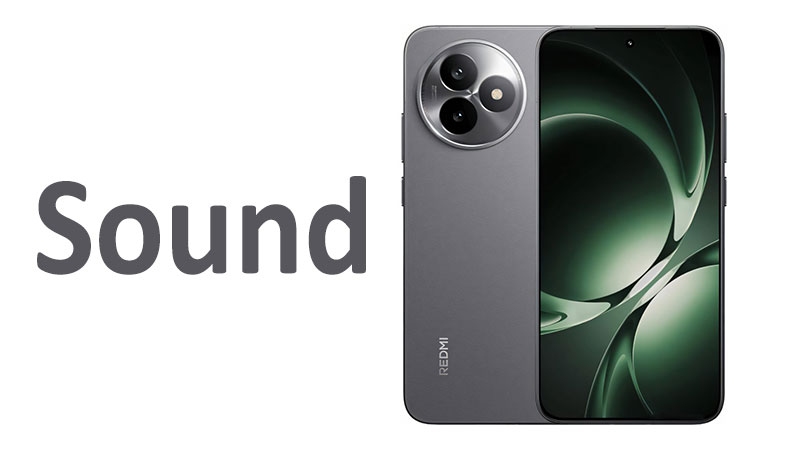In the fiercely competitive smartphone market, features like the camera, display, and battery life often steal the spotlight. However, for a truly immersive experience, audio quality is paramount. A phone’s ability to produce rich, clear sound transforms everything from watching movies to taking calls and listening to music. This is where a detailed look at the Google Pixel 10 sound becomes essential. Building on years of hardware refinement and software innovation, Google’s latest flagship aims to set a new standard in mobile audio.
This comprehensive review will dissect every facet of the Google Pixel 10’s audio capabilities. We will explore its speaker hardware, software enhancements, recording quality, and how it stacks up against its predecessors and key competitors. Whether you are an audiophile, a content creator, or simply someone who appreciates good sound, this guide will provide all the information you need.
The Foundation: Speaker Hardware and Design
Google has historically opted for a hybrid stereo speaker setup, and the Pixel 10 continues this trend with critical refinements. The system consists of a primary downward-firing speaker at the bottom edge and a secondary speaker integrated into the earpiece at the top.
Hardware Enhancements:
The most significant rumored upgrade in the Pixel 10 is the implementation of more balanced speaker drivers. In previous generations, the bottom speaker was often more powerful, leading to a slightly lopsided stereo image. For the Pixel 10, sources suggest Google has engineered the earpiece speaker to deliver more volume and body, creating a more symmetrical and immersive soundstage.
The speaker enclosures themselves have been redesigned for better acoustic resonance. This allows for deeper bass response and reduced vibration at high volumes, a common issue in thin smartphone chassis. The result is a sound that feels fuller and more controlled.
Key Points for Buyers:
- True stereo speaker setup for immersive media consumption.
- Improved balance between the top and bottom speakers creates a more even soundscape.
- The design minimizes chassis rattle, even at maximum volume.
Audio Performance: A Critical Listen
Hardware is only half the story. The tuning and processing of the sound determine the final output. The Google Pixel 10 sound profile is best described as clear, intelligent, and balanced.
Clarity and Mid-Range
Google’s tuning has always prioritized vocal clarity, and the Pixel 10 excels here. The mid-range is forward and articulate, making it exceptional for watching YouTube videos, listening to podcasts, and understanding dialogue in movies. Voices come through with natural warmth and presence, without being overshadowed by other frequencies.
Highs (Treble)
The treble is crisp and detailed without sounding harsh or sibilant. Cymbals in music tracks have a clean shimmer, and subtle high-frequency details in film scores are easily discernible. Compared to the Pixel 9, the high-end feels slightly more refined, avoiding the tinniness that can plague small speakers at high volumes.
Lows (Bass)
Bass is traditionally the Achilles’ heel of smartphone speakers. While the Pixel 10 won’t replace your dedicated Bluetooth speaker, it delivers a respectable low-end punch. Thanks to improved hardware and computational audio, the bass is tight and present. It provides a satisfying foundation for music genres like pop and electronic, though deep sub-bass frequencies are, understandably, limited.
Loudness and Distortion
The Pixel 10 gets impressively loud, easily filling a small room with sound. More importantly, it maintains its composure at peak volume. Distortion is minimal, with only the most complex, bass-heavy tracks showing any signs of strain.
Pros and Cons: Speaker Performance
Pros:
- Excellent vocal and dialogue clarity.
- Well-balanced stereo separation.
- High maximum volume with very little distortion.
- Clean and detailed high-frequency response.
Cons:
- Bass, while improved, won’t satisfy dedicated bass-heads.
- The soundstage is wide for a phone but can’t replicate the depth of dedicated speakers.
The AI Advantage: Computational Audio
Where the Google Pixel 10 sound truly distinguishes itself is in its use of artificial intelligence. Google leverages its Tensor G5 chip to perform real-time audio processing that goes far beyond a simple equalizer.
Adaptive Sound
This feature returns with significant improvements. Adaptive Sound uses the phone’s microphones to analyze the acoustics of your environment and dynamically adjusts the sound equalizer. In a noisy room, it might boost certain frequencies to enhance clarity. In a quiet, echoey room, it might dial back the treble to prevent harshness. The process is seamless and genuinely improves the listening experience in varied conditions.
Audio Magic Eraser 2.0
First introduced in previous Pixels, Audio Magic Eraser allows you to remove unwanted noises from your videos. The Pixel 10 version is more powerful and intuitive. It can now better identify and isolate distinct sound layers such as wind, crowds, and specific background noises, giving you granular control. For content creators, this is a game-changing feature that can salvage otherwise unusable footage.
Clear Calling
Google’s AI-powered noise suppression for phone calls is better than ever. It effectively filters out background noise from your end, ensuring the person you are speaking to hears your voice with crystal clarity, even if you are in a bustling café or on a windy street.
Wireless and Wired Audio: Beyond the Speakers
For many users, the primary audio experience will be through headphones. The Pixel 10 offers a robust suite of features for both wireless and wired listeners.
Bluetooth and Codec Support
The Pixel 10 is expected to ship with Bluetooth 5.4, ensuring a stable, low-latency connection. Crucially, it supports a wide range of high-fidelity Bluetooth codecs:
- SBC and AAC: Standard codecs for universal compatibility.
- aptX, aptX HD, and aptX Adaptive: Qualcomm’s popular codecs that offer higher quality and dynamic bitrates.
- LDAC: Sony’s high-resolution codec, capable of streaming audio at up to 990 kbps. This is a must-have for audiophiles using compatible headphones from brands like Sony and Anker.
This extensive codec support means that regardless of your headphone choice, you are likely to get the best possible wireless sound quality.
USB-C and DAC Performance
Like all modern flagships, the Pixel 10 does not have a 3.5mm headphone jack. Audio output is handled through the USB-C port. For wired audio enthusiasts, this means using a USB-C to 3.5mm dongle or dedicated USB-C headphones. The quality of the phone’s internal Digital-to-Analog Converter (DAC) is strong, providing a clean, noise-free signal that allows high-quality headphones to perform their best.
Immersive Entertainment: Spatial Audio
Spatial Audio is no longer a gimmick; it’s a core feature for immersive media. The Google Pixel 10 supports Spatial Audio with head tracking, primarily for use with compatible earbuds like the Pixel Buds Pro.
When watching movies or playing games that support multi-channel audio (like Dolby Atmos), Spatial Audio creates a virtual surround sound experience. The sound feels like it is coming from all around you, not just from two channels. With head tracking enabled, the soundstage remains anchored in place as you turn your head, deepening the sense of immersion. While Apple‘s ecosystem integration is still slightly ahead, Google’s implementation is effective and greatly enhances the viewing experience on the go.
Microphone and Recording Quality
A phone’s audio capabilities are not just about output; input is equally important. The Pixel 10 features a multi-microphone array designed for excellent audio capture.
In video recording, the microphones capture rich stereo sound. The AI-powered “Speech Enhancement” feature can be toggled to prioritize human voices, making the Pixel 10 an excellent tool for interviews, vlogging, and creating content where dialogue is key. The audio zoom feature, which focuses the microphones on the subject as you zoom in with the camera, also makes a return.
For voice memos and calls, the microphone quality is top-notch. It captures a natural, full-bodied vocal tone without the compressed, distant sound that plagues lesser phones.
Comparisons: Pixel 10 vs. The Competition
How does the Google Pixel 10 sound stack up against its main rivals?
Google Pixel 10 vs. Pixel 9
The Pixel 10 offers an evolutionary, not revolutionary, upgrade over its predecessor. The key improvements are the more balanced stereo speakers and the enhanced AI features like Audio Magic Eraser 2.0. While Pixel 9 owners may not find the audio alone worth the upgrade, the refinements are noticeable and welcome.
Google Pixel 10 vs. Apple iPhone 17
This is a battle of philosophies. The iPhone typically offers a very well-balanced, natural, and powerful sound profile with an incredibly wide soundstage for a phone. The Pixel 10 competes by being “smarter.” Its audio is clearer and more adaptable thanks to features like Adaptive Sound. The iPhone may have a slight edge in raw speaker power and bass depth, but the Pixel’s AI-driven clarity and call quality are arguably superior.
Google Pixel 10 vs. Samsung Galaxy S25
Samsung, with its Dolby Atmos integration, often provides a more “cinematic” and bass-heavy sound. It’s an exciting listen, especially for action movies. The Google Pixel 10 sound is more neutral and focused on clarity. The choice comes down to preference: Samsung’s powerful, processed sound versus the Pixel’s clean, intelligent, and articulate delivery.
Conclusion: An Intelligent Audio Powerhouse
The Google Pixel 10 sound and audio quality represent a thoughtful and intelligent approach to mobile audio. Google has moved beyond simply chasing loudness and has focused on creating a clear, adaptable, and genuinely useful audio experience.
The hardware improvements, particularly the more balanced stereo speakers, provide a solid foundation. But it is the software and AI that truly set the Pixel 10 apart. Features like Adaptive Sound, the next-generation Audio Magic Eraser, and best-in-class Clear Calling are not just bullet points on a spec sheet; they are practical tools that solve real-world audio problems.
Who Should Care About the Pixel 10’s Audio?
- Content Consumers: If you watch a lot of videos, movies, or listen to podcasts on your phone, the vocal clarity and balanced stereo sound will be a major benefit.
- Content Creators: The combination of excellent recording microphones and the powerful Audio Magic Eraser makes the Pixel 10 a formidable pocket production tool.
- Anyone Who Makes Frequent Calls: The superior noise cancellation of Clear Calling makes for a much better conversational experience.
- Wireless Audio Enthusiasts: Broad codec support, especially LDAC, ensures you can get the most out of your high-end Bluetooth headphones.
While it may not produce the window-rattling bass of a dedicated speaker, the Google Pixel 10 delivers a mature, refined, and incredibly smart audio package. It proves that the future of mobile audio lies not just in bigger drivers, but in smarter processing.
FAQ
Does the Google Pixel 10 have a 3.5mm headphone jack?
No, the Google Pixel 10 does not include a 3.5mm headphone jack. To use wired headphones, you will need a USB-C to 3.5mm adapter or headphones that connect directly via USB-C.
What are the major Bluetooth audio codecs supported by the Pixel 10?
The Pixel 10 supports a comprehensive range of codecs, including standard SBC and AAC, as well as high-quality options like Qualcomm’s aptX, aptX HD, and aptX Adaptive, and Sony’s high-resolution LDAC codec.
How does Audio Magic Eraser work on the Pixel 10?
Audio Magic Eraser uses Google’s AI to identify and separate different sounds in a video’s audio track. It then allows the user to reduce the volume of unwanted sounds, such as wind, crowd noise, or music, to make the desired sounds (like voices) clearer.
Are the Pixel 10 speakers better than the iPhone’s speakers?
They offer different strengths. The iPhone’s speakers often have slightly more bass and raw power. The Pixel 10 speakers, however, are renowned for their AI-enhanced clarity, balanced stereo image, and features like Adaptive Sound, which makes them sound great in any environment.
Does the Google Pixel 10 support Dolby Atmos?
The Google Pixel 10 primarily focuses on its native Spatial Audio implementation for immersive sound with head tracking. While it can play back content encoded with Dolby Atmos, it processes it through its own spatializer rather than carrying the official Dolby Atmos branding and tuning found on some other devices.


